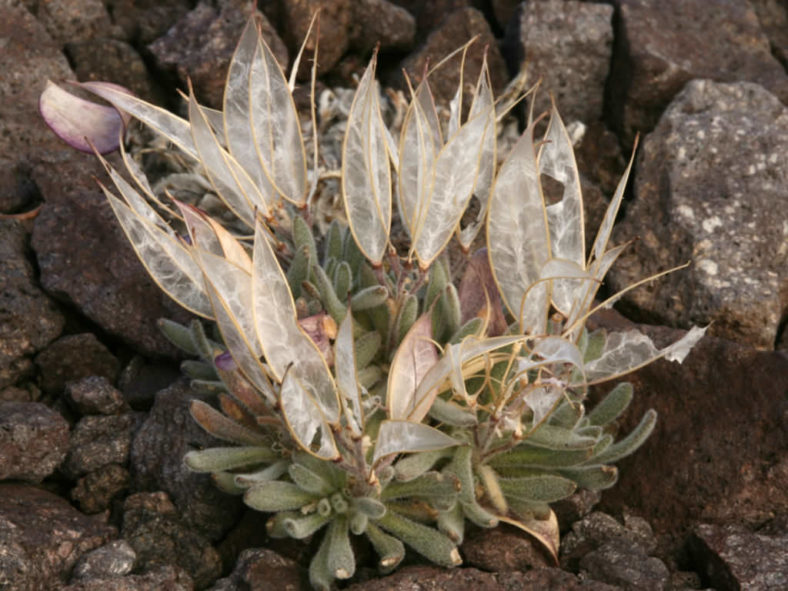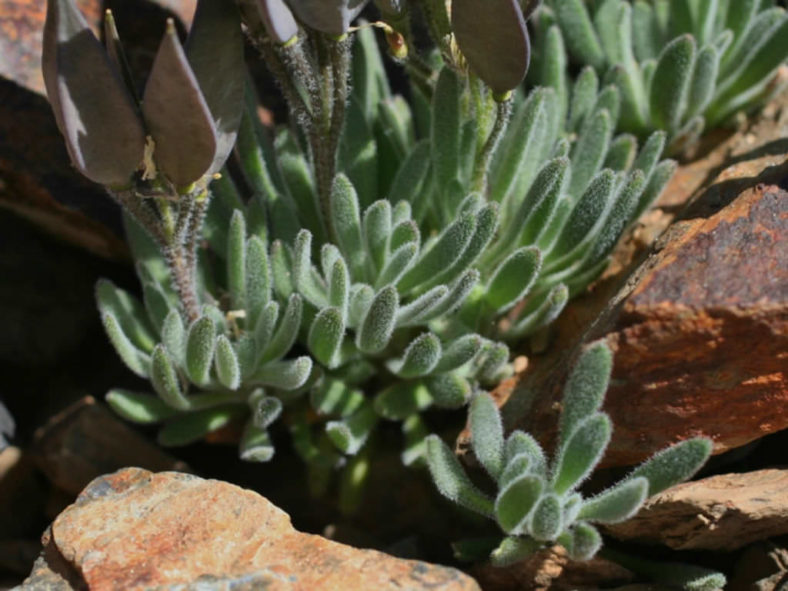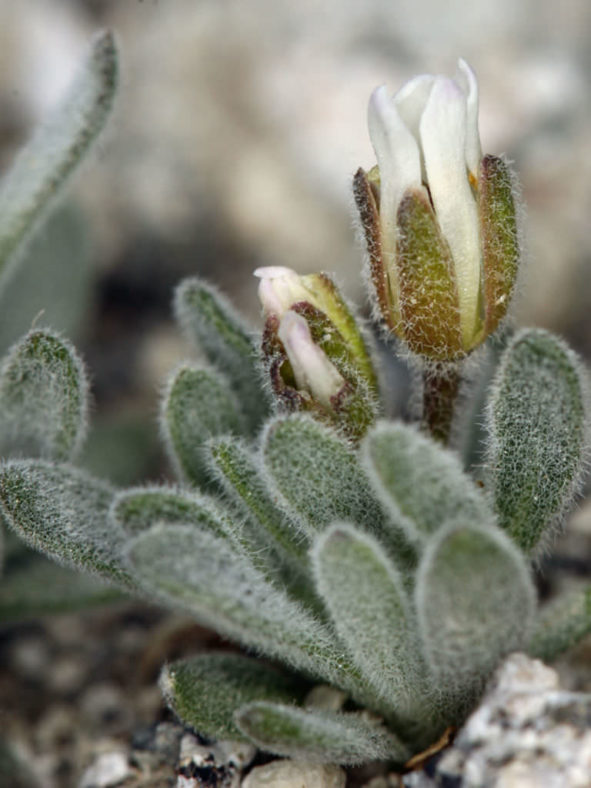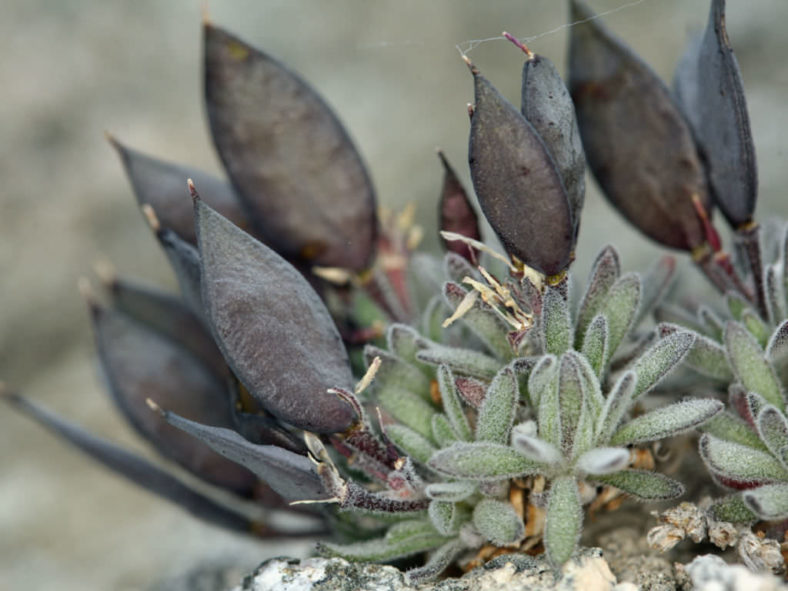Scientific Name
Anelsonia eurycarpa (A.Gray) J.F.Macbr. & Payson
Common Name(s)
Daggerpod
Synonym(s)
Draba eurycarpa, Parrya eurycarpa, Parrya huddelliana, Phoenicaulis eurycarpa, Phoenicaulis huddelliana
Scientific Classification
Family: Brassicaceae
Tribe: Boechereae
Genus: Anelsonia
Etymology
The specific epithet "eurycarpa" (pronounced "yoor-ee-KAR-puh") means "broad-fruited" and refers to the size and shape of the fruits of this species.
Origin
Anelsonia eurycarpa is native to the western United States.
Description
Anelsonia eurycarpa is a perennial plant with a many-branched caudex and short, slender stems terminating in rosettes of fleshy, velvety leaves. Persistent petiolar remains cover the stems. The leaves are finger-like and can grow up to 0.8 inches (2 cm) long.
The tiny flowers are white to purplish, densely packed in a short inflorescence, and appear from late spring to summer. The distinctive fruits are papery to leathery, white, and often with areas of purple or brown. They are elliptic, measuring up to 1.2 inches (3 cm) long, and contain several brown seeds.

Anelsonia eurycarpa is a single species in the monotypic genus Anelsonia that belongs to the family Brassicaceae, commonly known as the Mustard Family. It is similar to Phoenicaulis cheiranthoides.
This unusual plant is usually found growing on disintegrated, unaltered volcanic rocks or whitish ash at high elevations, 9,500 to 13,000 feet (2,900 to 4,000 m), in subalpine or alpine slopes and ridges from central Idaho to the Sweetwater Mountains, White Mountains, and Sierra Nevada of California. In 1983, Arnold Tiehm found this species growing on white-colored ash at 5,300 feet (1,600 m) on the south side of Mahogany Mountain in Washoe County, Nevada.
Links
- Back to genus Anelsonia
- Succupedia: Browse succulents by Scientific Name, Common Name, Genus, Family, USDA Hardiness Zone, Origin, or cacti by Genus
Photo Gallery
Click on a photo to see a larger version.


